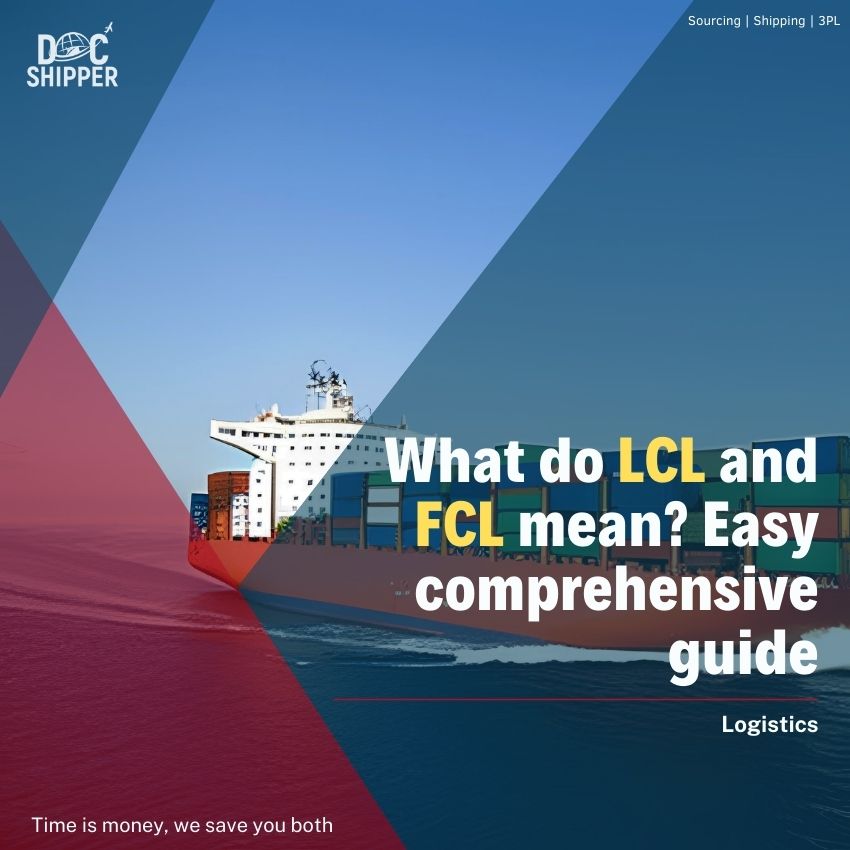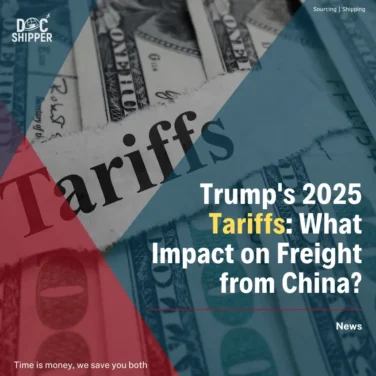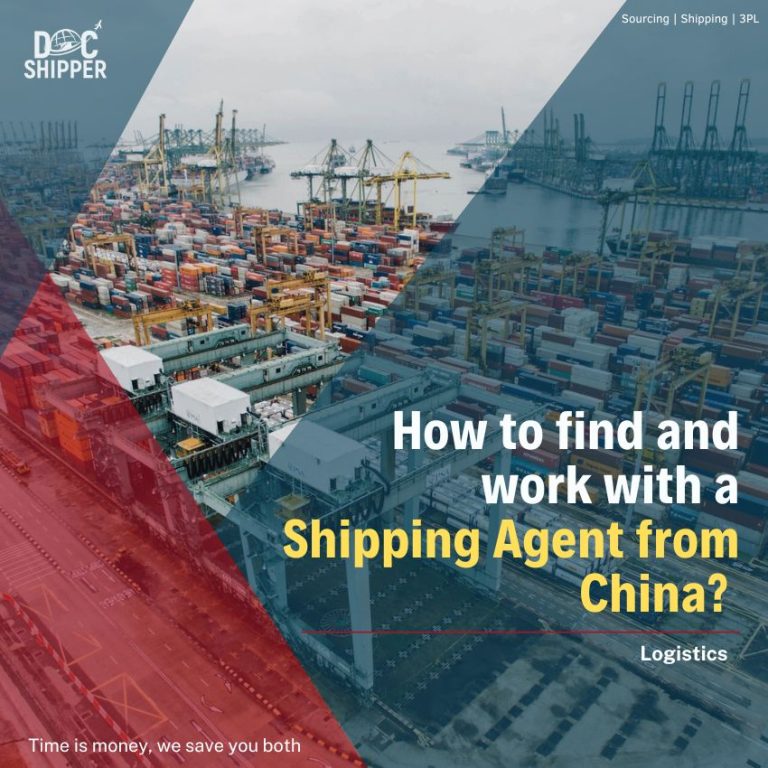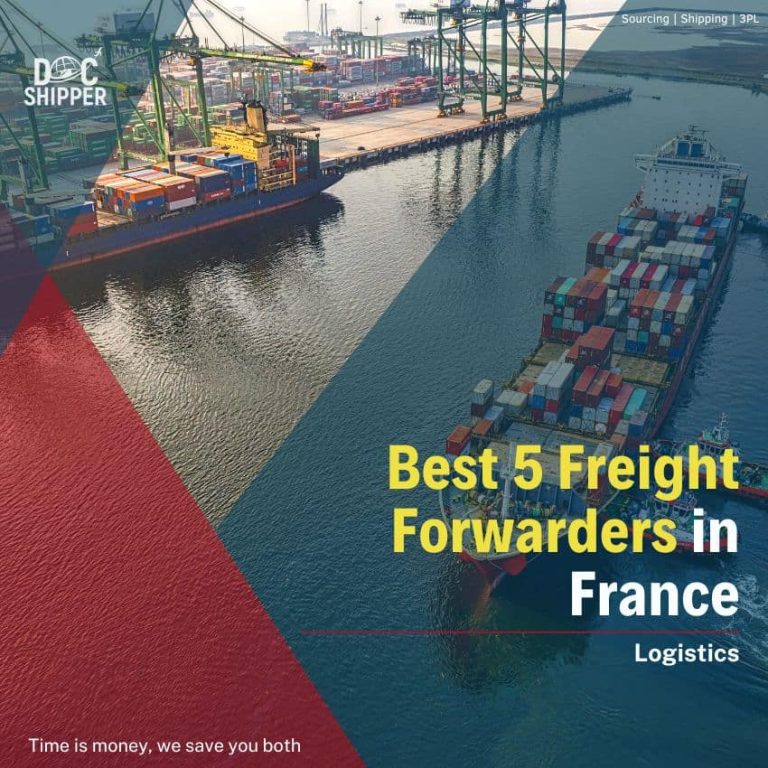These days, importers and exporters use a variety of acronyms such as FCL and LCL. This makes it difficult to understand certain expressions when a sector is not part of our field, especially when these expressions resemble each other. That’s why in this article we’re going to show you the differences between LCL and FCL shipping, so that you can better understand and choose the one that suits you best.
What does LCL and FCL mean?
Less than Container Load (LCL) and Full Container Load (FCL) are two terms commonly used in the shipping industry.
LCL refers to less than full container load. When you ship LCL, you share container space with other shippers. Your goods are grouped with other cargo to fill the container, reducing shipping costs for smaller shipments.
On the other hand, FCL refers to a full container load. When you opt for an FCL load, you rent a full container for your own exclusive use. You can load the container with your own goods until it is full.
How does FCL & LCL works?
FCL and LCL are two distinct shipping modes. The first one involves leasing a full container for a single shipper, while the second one consolidates shipments from several shippers into a single container. Let’s take a look at how they work:
How does FCL shipping works ?
When working with FCL, the buyer rents the entire container space at a fixed price. In addition to the fixed cost of sea freight, the buyer must also take into account certain additional fixed costs, such as handling and chassis charges.
As with commercial air travel, shipping lines generally modify rates according to itinerary demand, so it’s best to check rates according to when and where the container will be shipped.
How does LCL shipping works ?
In an LCL shipment, different shippers share a container. When the volume of cargo is not sufficient to fill a full container, an LCL shipment is generally cheaper, as the cost of shipping a full container is shared. When comparing the CBM cost between an LCL and an FCL shipment, the LCL will be higher, but the total price is often lower.
What are the main differences between FCL and LCL shipping?
The main difference between FCL and LCL is that the buyer shares the space in a container for an LCL shipment, as opposed to leasing the entire container space under an FCL agreement. To help you understand and navigate these options, we’ve created a chart that can guide you in deciding which shipping method is best suited to your needs :

DocShipper Advice
Need Fast International Shipping Help?
DocShipper offers assistance with international transportation. Whether the shipment is carried out by Sea freight or Air freight. Contact us to receive a free shipping quote in less than 24h.
What are the advantages and disadvantages of FCL and LCL shipping?
FCL and LCL are two different ways of shipping goods by sea. Each of these methods has distinct advantages and disadvantages :
What are the advantages of FCL shipping?
- Cost-Effective: FCL offers a flat rate for the entire container, resulting in lower costs per cubic meter (cbm) compared to LCL, where you pay based on the square footage you use.
- Quicker Transit Time: FCL shipments generally arrive a few days earlier than LCL shipments due to the streamlined process. LCL shipments involve additional steps for loading and unloading as they combine multiple shipments. If you have a tight deadline, opting for FCL can help ensure timely delivery.
- Reduced Damage: With FCL, only you and your supplier handle the goods, reducing the risk of damage. The container is loaded and sealed by your supplier, ensuring the goods remain intact during transit. This is particularly beneficial for delicate items.
What are the disadvantages of FCL shipping?
- Higher Costs: One of the drawbacks of using an FCL container is that you are responsible for paying the full cost of the container, regardless of whether it is fully utilized or not. This can result in higher expenses, especially if you don’t have enough cargo to fill the entire container.
- Unsuitable for Small Packages: FCL is generally more suitable for importers and exporters with larger cargo volumes. If you have smaller shipments or packages, FCL may not be the best option.
What are the advantages of LCL shipping?
- Cost Savings: One of the advantages of shipping your products through LCL is that you can benefit from cost savings. Since you share the container with other suppliers, you split the freight costs among all the parties involved. This can be particularly beneficial if you have smaller shipment volumes, as you only pay for the space you utilize in the container.
- Reduced Inventory Costs: LCL offers the advantage of reducing the need for maintaining a large inventory of products. With LCL shipments, you have the flexibility to ship smaller quantities more frequently. This allows you to manage your inventory more efficiently and avoid the expenses associated with storing excess inventory. By shipping smaller quantities as needed, you can optimize your inventory levels and minimize carrying costs.
What are the disadvantages of FCL shipping?
- Higher Cost per Cubic Meter: LCL shipments often come with a higher cost per cubic meter compared to FCL shipments, as the container space is shared among multiple shipments, resulting in a relatively higher cost per unit volume.
- Potential Customs Delays: Since the container contains various LCL shipments from different suppliers, there is a possibility that customs authorities may need to inspect or clear specific items within the container individually. These additional customs steps can introduce delays in the overall shipment process, potentially impacting the delivery timeline of all the LCL products inside the container.
- Increased Handling Risks: LCL shipments involve additional handling stages, increasing the potential risk of damage or loss during loading, unloading, and transshipment, especially for fragile or delicate goods.
DocShipper Alert
Shipping From China? DocShipper Helps!
Are you planning to ship goods from China by sea? Whether it’s a groupage shipment or a full container, DocShipper takes care of all the procedures with the various players in the logistics chain. A single point of contact, dedicated service, peace of mind, expertise… DocShipper makes importing and exporting more pleasant. Contact us to receive a free estimate in less than 24 hours.
FCL vs LCL : which one is best suited to your business?
Depending on your activity, FCL or LCL may be more advantageous for you. Let’s take a look at which of these shipping methods suits you best:
Is FCL suited to my business ?
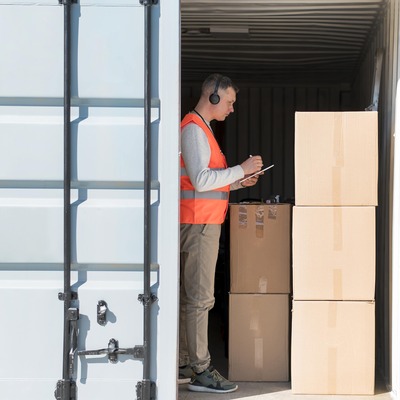 FCL is suited to your business if your business involves frequent shipments and anticipates transporting a substantial volume of goods exceeding 15 cubic meters, FCL often emerges as the most cost-effective option for ocean freight. By utilizing the entire container capacity or filling it to a significant extent, you can benefit from economies of scale. This allows for the transportation of a larger quantity of products using fewer containers, resulting in potential cost savings.
FCL is suited to your business if your business involves frequent shipments and anticipates transporting a substantial volume of goods exceeding 15 cubic meters, FCL often emerges as the most cost-effective option for ocean freight. By utilizing the entire container capacity or filling it to a significant extent, you can benefit from economies of scale. This allows for the transportation of a larger quantity of products using fewer containers, resulting in potential cost savings.
Additionally, if your supplier requires expedited shipping or time-sensitive delivery, FCL proves to be an ideal choice. Unlike LCL (Less than Container Load) shipments, where goods from multiple suppliers are consolidated and deconsolidated at various ports, FCL shipments follow a more direct route. The containers are unloaded from the vessel and transported directly to the final destination, leading to shorter overall transit times.
Furthermore, it’s crucial to consider the nature of the goods you intend to ship. FCL is particularly well-suited for handling delicate and high-value items. The dedicated route of the container, with a single consignee, reduces the chances of damage, theft, or loss during transportation.
Is LCL suited to my business?
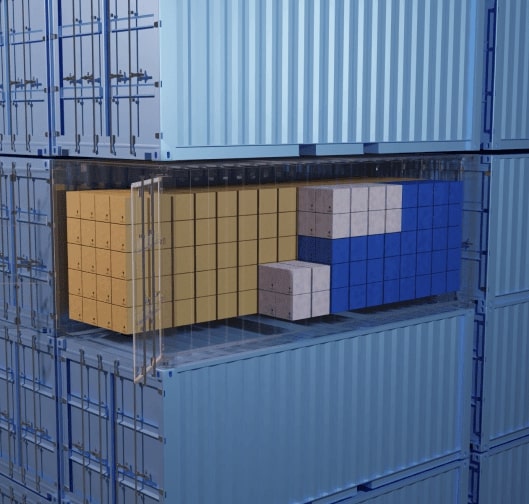 It is if, firstly, your shipment volume is relatively small, typically less than 15 cubic meters (CBM), LCL provides a cost-effective solution. It is particularly beneficial if you have shipments weighing less than 1 CBM but more than 150 kg.
It is if, firstly, your shipment volume is relatively small, typically less than 15 cubic meters (CBM), LCL provides a cost-effective solution. It is particularly beneficial if you have shipments weighing less than 1 CBM but more than 150 kg.
Furthermore, if your business involves splitting shipments to multiple destinations or if you need flexibility in shipping to various locations, LCL is highly recommended. It allows you to divide the shipment instead of sending multiple complete containers, which can be advantageous when shipping to multiple Amazon FBA locations or 3PLs. LCL enables you to optimize your logistics by delivering the load to different ports based on the specific delivery locations.
Considering these factors, LCL can be the best-suited option for your business if you frequently handle smaller shipment volumes, require cost-effective solutions, and need flexibility in shipping to multiple destinations. Assessing your specific needs and evaluating the advantages of LCL will help determine if it aligns well with your business requirements.
DocShipper Advice
How Can DocShipper Simplify Sea Freight?
Transport your goods across the oceans safely and at competitive prices with DocShipper. Take advantage of our reliable and efficient sea freight service to ship your products worldwide. Contact us for more information and get a free quote within 24 hours.
How to choose between FCL and LCL: in detail
Let’s take a closer look at the differences between FCL and LCL, the two shipping methods:
Shipment’s Volume
The table below highlights the differences in shipping volume between FCL and LCL :
| Criteria | FCL | LCL |
|---|---|---|
| Shipment’s volume | Here are the common container sizes for FCL shipments and their approximate capacities: – 20′ container: approximately 33 CBM – 40′ container: approximately 67.5 CBM – 40′ HQ container: approximately 76 CBMFCL can be used for any shipment, regardless of volume. However, it is recommended to book a full container if the total load occupies 15 CBM or more. | LCL can accommodate shipments as small as 1 CBM, with a minimum chargeable volume of 1 CBM. However, it is advisable to explore air options for shipments less than 1 CBM and with a chargeable weight of less than 200kg. For shipments with a volume of less than 15 CBM, LCL is an ideal choice. |
Shipment’s Weight
The following table shows the differences in shipping weights between FCL and LCL:
| Criteria | FCL | LCL |
|---|---|---|
| Shipment’s weight | It’s important to be aware of the maximum allowable weight for each container size. These weight restrictions are typically indicated on the container itself for easy reference. However, different countries may have specific regulations regarding maximum loads. Here are the maximum payload weights for common container sizes: The maximum weight per cubic meter (CBM) is 1 ton or 1,000 kg. If the shipment exceeds this limit, the chargeable weight is based on the gross weight. For example, a 1 CBM load weighing 1,300 kg would be charged as 1.3 CBM. | In the case of small shipments below 1 CBM but weighing more than 150 kg, LCL can offer a more cost-effective solution compared to air freight. Airlines calculate the chargeable weight based on either the gross weight or the volumetric weight, whichever is higher. For instance, a 0.8 CBM shipment with a gross weight of 300 kg may have a volumetric weight of 133 kg. However, regardless of the actual space occupied, airlines charge based on the gross weight of 300 kg for freight purposes. |
Freight Cost
The table below shows the variations in freight costs between FCL and LCL:
| Criteria | FCL | LCL |
|---|---|---|
| Freight cost | FCL can be cheaper for shipments with a volume of around 15 CBM. There is no specific volume when an FCL is less expensive, since CBM rates differ depending on the route. The price per CBM of the container (maximum load divided by the container cost for the ocean freight) is not always lower than LCL. However, the overall cost for a full container load can be less expensive since the local charges for an FCL is a fixed rate per container. | In LCL shipping, smaller loads below 15 CBM generally have lower costs, while larger loads exceeding 15 CBM can potentially result in higher overall expenses depending on the chosen route. Local fees typically surpass those for full container loads (FCL). If the shipment is around 2 CBM more or less than 15 CBM, it is advisable to consider the full container load option. |
Transit time
The following table compares transit times between FCL and LCL:
| Criteria | FCL | LCL |
|---|---|---|
| Transit time | The transit time for FCL shipments can vary but typically ranges from a few days to a few weeks. The overall transit time is typically shorter for FCL shipments as the containers are directly unloaded from the vessel and transported to the final destination. | LCL shipments generally take at least four days or more compared to FCL. This longer duration is primarily due to the additional time required for unloading, sorting, and deconsolidation of multiple consignments. Moreover, if a single consignment within the same LCL container is selected for customs inspection, the entire container will be placed on hold by customs, further adding to the transit time. |
Security and Damages
The table below examines the security aspects and damage risks associated with FCL and LCL:
| Criteria | FCL | LCL |
|---|---|---|
| Security and damages | There is a lower risk of the cargo getting damaged, stolen, or lost because the container travels on a direct route with a single consignee. Insurance and container loading inspections are also available as an extra layer of protection. | There’s a higher risk for damages, theft, or loss since the container is shared with other shipments. Freight insurance is available for an extra layer of protection for the buyer. |
Customs Clearance and Customs Exam
Both LCL and FCL shipments go through the same customs clearance process. The following table presents the differences in terms of customs clearance and customs inspection between FCL and LCL:
| Criteria | FCL | LCL |
|---|---|---|
| Custom clearance and customs exam | Customs inspections of containers are conducted randomly, which means that any shipment, regardless of consistency in product and route, can be subject to examination. In such cases, it is the buyer who bears the costs associated with the customs examination, including port and warehousing fees. It is wise to always consider the possibility of incurring these examination-related expenses when planning and arranging shipments.
| In LCL shipments, there is a potential challenge if one consignment within the container triggers a customs examination, as the entire container will need to undergo the examination. This can range from a simple X-Ray scan to a more thorough CET (Contraband Enforcement Team) examination. It’s worth mentioning that the likelihood of examination increases with the number of consignees sharing the container. The cost of the customs examination, as well as any associated warehousing and port fees, will be divided among all the consignees who are utilizing the container. This ensures a fair distribution of the expenses. |
Traceability
The table below highlights the levels of traceability offered by FCL and LCL:
| Criteria | FCL | LCL |
|---|---|---|
| Traceability | Tracking for FCL and LCL shipments is similar, where you can track either the vessel or the container’s location using the information from the House Bill of Lading. However, FCL is generally easier to track as the full container is transported under one consignee. Your freight forwarder can provide you with a shipping plan estimate for better visibility. | While tracking the vessel and container using the information from the Bill of Lading is possible, it may not provide accurate updates once the container reaches the port or during cargo unloading due to multiple handlers. In such cases, it is advisable to consult your freight forwarder for more detailed information. |
Split Shipment
The following table compares the split shipment possibilities between FCL and LCL:
| Criteria | FCL | LCL |
|---|---|---|
| Split shipment | It is important to consider the option of splitting your shipment under an FCL agreement. However, it is crucial to thoroughly assess the available options and determine the most cost-effective approach. While FCL containers do not require transportation to a warehouse, splitting the shipment may involve additional steps such as warehousing, labeling, sorting, loading, unloading, and delivery, which can incur extra fees. To avoid unexpected expenses, it is highly recommended to consult with your freight forwarder to identify the optimal route and avoid unnecessary costs. | Splitting shipments for delivery to different locations is more feasible with LCL shipments, as the full container is sent to a warehouse for sorting. If you have multiple destinations that are far apart, LCL might be a more suitable choice, considering the total volume of the shipment. By dividing the load, you can utilize different ports depending on the delivery locations. This flexibility can offer practical advantages for managing complex shipping requirements. |
Q&A | What do LCL & FCL mean? Easy comprehensive guide [2023]
The main difference between FCL (Full Container Load) and LCL (Less than Container Load) shipments lies in the utilization of container space. In FCL shipments, an entire container is exclusively used for a single shipment, whether it fills the container completely or not. On the other hand, LCL shipments involve consolidating multiple shipments from different customers into a single container, sharing the container space and costs among the various consignees.
Yes, there are volume requirements for FCL and LCL shipments. In FCL shipments, you can book a full container regardless of the volume, but it is generally recommended to book a full container if the total load occupies 15 cubic meters (CBM) or more. LCL shipments, on the other hand, are typically suitable for smaller shipments that do not fill an entire container. There is no specific volume requirement for LCL, but it is often more economical for shipments below 15 CBM.
The cost differs between FCL (Full Container Load) and LCL (Less than Container Load) shipments. FCL shipments usually have a fixed rate per container, regardless of the cargo volume. This means that if you have a larger shipment that fills the entire container, FCL can be more cost-effective. On the other hand, LCL shipments are charged based on the volume of the cargo, as you only pay for the space you occupy within a shared container. For smaller shipments below a certain volume threshold, LCL can be more economical compared to booking a full container. It is important to consider the size and volume of your shipment to determine which option is more cost-effective for your specific needs.
The risk of damage or loss can vary between LCL and FCL shipments. In an LCL shipment, where multiple shipments are consolidated into a single container, there is a higher risk of damage or loss. This is because the cargo from different consignees is packed together, increasing the handling and potential for mishandling during loading and unloading. On the other hand, in an FCL shipment, the container is dedicated to a single consignee, reducing the risk of damage or loss caused by other shipments. The cargo remains intact and secure within the container throughout the entire transit, minimizing the chances of damage or loss.
